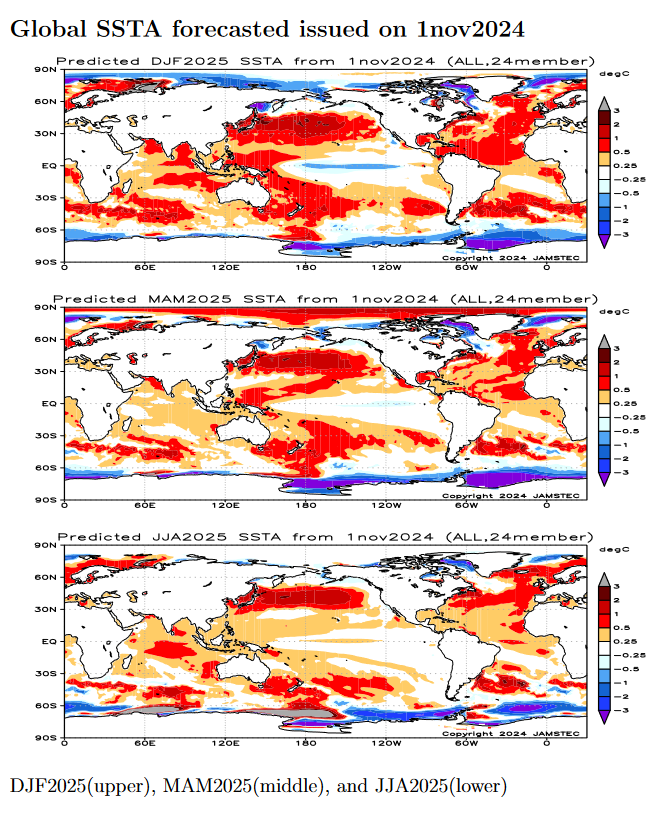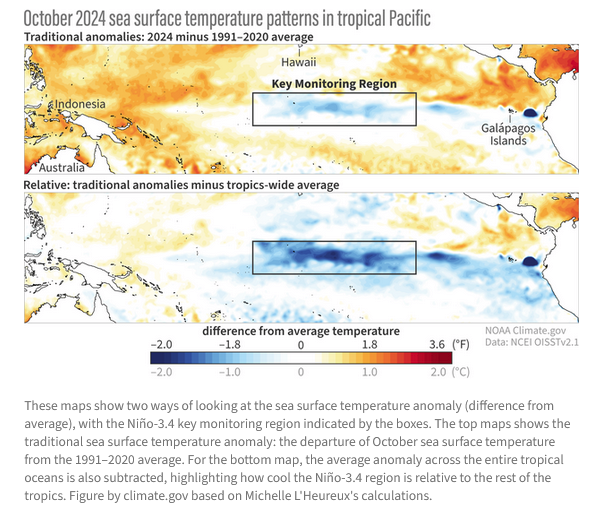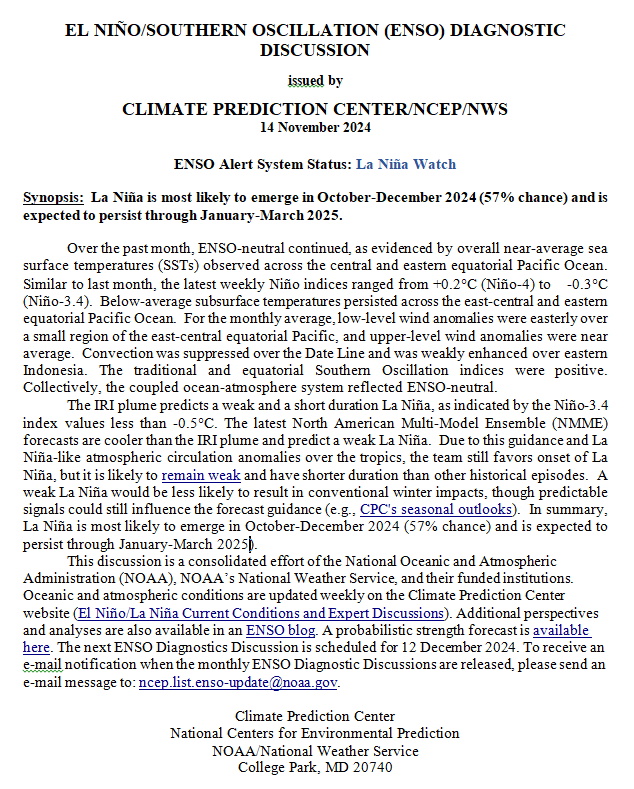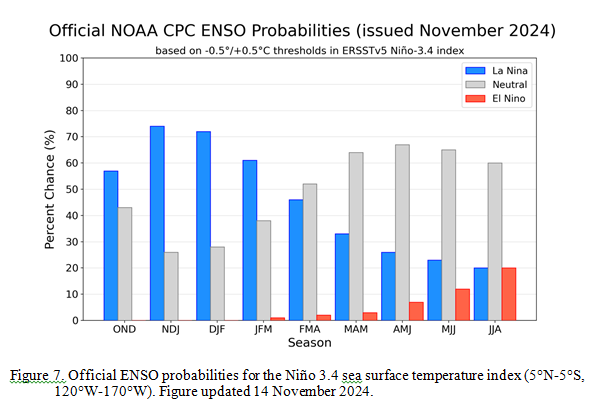Short Range Forecast Discussion
NWS Weather Prediction Center College Park MD
Wed Nov 20 2024
Valid 12Z Wed Nov 20 2024 – 12Z Fri Nov 22 2024
…Back-to-back powerful Pacific storm systems to impact the West Coast
through the end of this week with heavy rain, life-threatening flooding,
strong winds, and higher elevation mountain snow…
…Near blizzard conditions are possible through this evening across the
northern Plains…
…Heavy snow is likely throughout parts of the central Appalachians
beginning on Thursday, with a separate burst of snowfall possible across
northeast Pennsylvania and neighboring regions of the Northeast Thursday
night into Friday...
The active November weather pattern impacting CONUS is forecast to
continue through the end of this week and bring hazardous rain, wind, and
snow for several regions. A significant Pacific storm system and strong
atmospheric river have already started pummeling the West Coast and
Northwest this morning. The very deep low pressure system churning about
300 miles off the coast of Washington is responsible for high winds
impacting much of northern California, Oregon, and Washington. These winds
have already produced numerous power outages, reports of tree damage, and
are expected to create blizzard conditions throughout the Cascades.
Fortunately these winds are expected to gradually subside by midday as the
low pressure system swings away from the region. However, a continuous
plume of ample atmospheric moisture content entering northern California
this morning is forecast to linger through the end of the week and lead to
extreme rainfall totals. Over 10 inches of rainfall across the northern
California coast and inland mountain ranges are likely to increase the
threat of life-threatening flash flooding, rock slides, and debris flows.
As this corridor of heavy rainfall lingers along a stationary boundary
extending into the Pacific Ocean, a separate area of low pressure is
forecast to develop and rapidly strengthen off the Northwest coast on
Friday. This storm will help amplify the atmospheric river streaming into
northern California through Friday morning, exacerbating the flooding
threat. WPC has issued a High Risk (level 4/4) of Excessive Rainfall on
Thursday in order to further highlight this concern. Additionally, another
round of strong winds are anticipated from this second low pressure system
throughout the Northwest to end the week. Residents and visitors residing
or traveling between northern California and Washington are advised to
check road conditions before venturing out, listen to advice from local
officials, review emergency plans, and have multiple ways of receiving
warnings.
For the central U.S. the main weather story will be found throughout the
northern Plains as heavy snow and gusty winds create near blizzard
conditions today. These hazardous weather conditions are resulting from a
slow-moving and gradually weakening low pressure system just north of the
Minnesota-North Dakota border. The greatest snowfall amounts are forecast
across North Dakota, eastern South Dakota, and northwest Minnesota, but
with additional totals today generally under 4 inches. Wind impacts should
be more widespread and extend into eastern Montana and Nebraska as maximum
gusts could exceed 60 mph through tonight. This area of low pressure is
anticipated to rapidly weaken tonight and lead to calmer conditions on
Thursday.
After an extended period of dry and tranquil weather across the Northeast,
the upper level system exiting the northern Plains today will slide
eastward and produce a chance for heavy precipitation in the form of both
rain and snow. The evolution of surface features over the next few days
are forecast to begin with a developing strong and compact low pressure
system over the Great Lakes today, while a cold front quickly pushes
eastward to the Mid-Atlantic by tonight. Showers and maybe a rumble of
thunder may accompany this cold front as rain possibly mixes with snow
spreading across the Great Lakes. By Thursday, a separate area of low
pressure forming along the aforementioned cold front is expected to deepen
and lift northward into the Northeast, while also leading to a blossoming
precipitation shield. Rain is most likely across New England where warmer
air surges from the Atlantic Ocean, but the higher elevations and area
directly underneath the cold upper low pressure system may see
precipitation fall as heavy snow. Probabilities for at least 4 inches of
snow by Friday night are high (70-90%) across northeast Pennsylvania and
the southern Catskill mountains of New York. Impactful snowfall is also
likely to be experienced throughout the Allegheny mountains of West
Virginia, Maryland, and Pennsylvania through the end of the week due to a
longer duration favorable upslope snow setup. Total snowfall amounts in
these higher elevations could add up to a foot.
Elsewhere, high pressure building into the south-central U.S. will create
dry conditions from the lower Mississippi Valley to much of the Plains,
Rockies, and Southwest. The temperature outlook features one final day of
widespread 60s and 70s along the East Coast before a strong cold front
knocks afternoon highs below average through the start of the weekend. The
coldest temperatures when compared to climatology over the next few days
are forecast across the northern Plains (highs in the 20s) and Ohio Valley
(highs in the 30s and 40s).






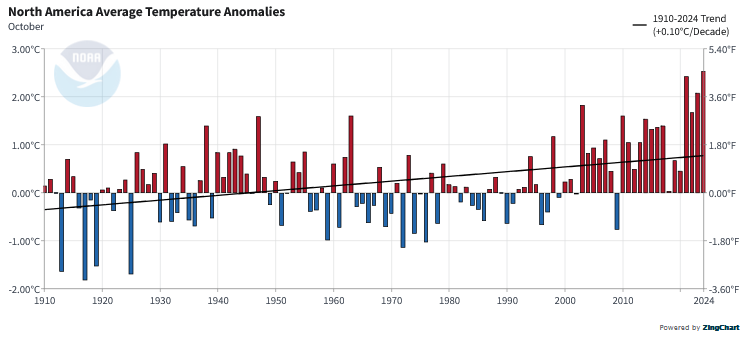
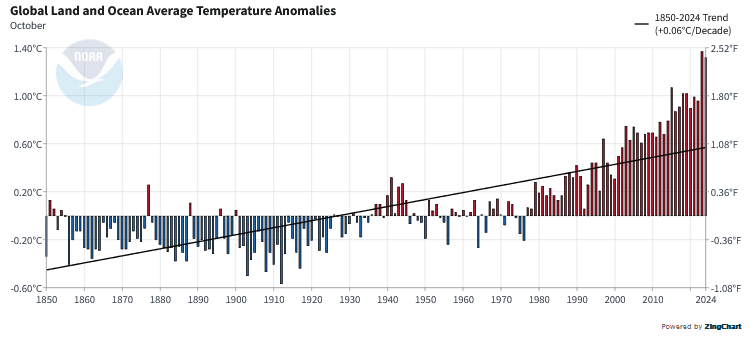
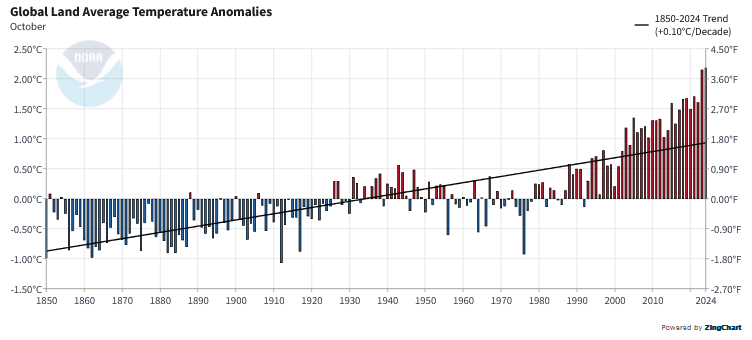
![[Image of rainfall potential]](https://www.nhc.noaa.gov/storm_graphics/AT19/refresh/AL1924INTQPF+gif/053133INTQPF_sm.gif)

